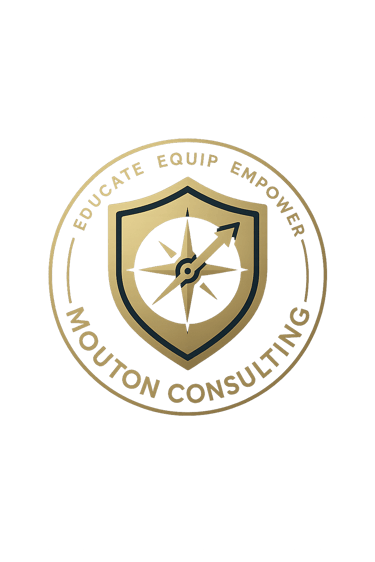The Currency of Leadership: Trust at the Heart of Every Functional Network
Trust is the unseen infrastructure that holds every great team, school, and organization together. In this post, Dr. Marion Mouton explores how trust shapes communication, accelerates performance, and strengthens culture. Blending leadership experience with current research, he breaks down the three dimensions of trust competence, character, and care and provides actionable strategies for leaders to build and sustain it. Readers will learn how clarity, consistency, and credibility transform trust from a feeling into a system.
11/8/20254 min read


Trust is a fascinating concept both fragile and foundational. You can’t see it, yet you can feel it. You can’t quantify it easily, but its absence slows everything down. In every school, business, or team I’ve led, trust has been the unseen force separating good performance from great culture. Data can inform. Strategy can direct. Systems can sustain.
But only trust consistent, authentic, and earned creates the momentum that transforms vision into movement. Trust is not a soft skill; it’s structural. It determines whether people collaborate or compete, whether communication flows or fragments, and whether innovation thrives or withers under suspicion. When leaders misunderstand trust, they chase compliance instead of commitment. They issue directives when what people really need is belief.
A 2023 Harvard Business Review study found that employees in high-trust organizations report 74% less stress, 50% higher productivity, 106% more energy, and 76% more engagement than those in low-trust environments (Zak, 2023). Trust directly influences physiology, morale, and performance. When people trust leadership, they spend less time protecting themselves and more time producing results. Similarly, research from the Center for Creative Leadership (2022) emphasizes that trust accelerates organizational adaptability during change and disruption—especially in education and public sectors where uncertainty is high.
Educate: Trust as the Invisible Infrastructure
Think of trust as the network wiring of any organization. It’s unseen but essential.
Without it, communication lags, misunderstandings multiply, and leaders begin managing emotion instead of progress.
Every time a leader delivers on a promise, communicates with transparency, or listens without defense, another connection strengthens in that invisible network. Conversely, every inconsistency, avoidance, or dismissive tone weakens it.
Trust accelerates everything it touches from decision-making to innovation. It allows healthy conflict because people know disagreement doesn’t equal disrespect. It transforms accountability from pressure into partnership (Bentzen, 2023; Chen & Sriphon, 2022).
“People don’t commit to plans; they commit to people they trust.” —Dr. Marion Mouton
The Three Dimensions of Trust
Competence Can you deliver what you promise?
People trust leaders who execute reliably. Skill matters, but so does consistency. Competence is not perfection it’s dependability under pressure. A leader’s word must be a contract, not a concept (Kumar & Sumitha, 2023).Character Will you do the right thing when no one is watching?
Character builds credibility. It’s the integrity that sustains influence after the spotlight fades. When character wavers, communication becomes suspect even the truth sounds rehearsed.Care Do people believe you genuinely value them?
Care transforms hierarchy into humanity. People follow competence, but they fight for leaders who show care. When staff feel seen, heard, and supported, trust becomes self-renewing (Covey, 2022).
These three dimensions competence, character, and care operate like the legs of a tripod.
Remove one, and stability collapses.
Empower: Creating a Culture of Trust
Trust cannot live in isolation it must become part of organizational culture.
In Schools:
Students learn best in classrooms where teachers trust leadership. Teachers take risks when they feel trusted to innovate without fear of failure. That psychological safety drives improvement far faster than compliance checks ever will (CCL, 2022).
In Teams:
High-trust teams replace gossip with growth. They engage in direct conversations because honesty isn’t a threat it’s a gift.
In Systems:
Trust scales when processes are fair and consistent. When leaders enforce expectations equally, credibility compounds.
When trust becomes cultural currency, people stop hoarding information and start investing effort.
“Trust doesn’t speed time; it removes friction.” —Dr. Marion Mouton
Equip: How Leaders Build and Sustain Trust
Lead with Transparency.
Explain the why behind decisions. Hidden reasoning breeds rumors; open reasoning builds understanding.Follow Through Relentlessly.
Do what you say you will do every time. Consistency communicates reliability better than speeches.Admit Mistakes Promptly.
Transparency after error humanizes leadership and resets the trust meter faster than perfection ever could.Ask Before Assuming.
Curiosity prevents conflict. Leaders who ask clarifying questions preserve dignity while protecting truth.Match Energy with Empathy.
Your calm becomes your team’s climate. When you respond with empathy under stress, you teach others that people matter more than pressure.Protect People Publicly, Correct Privately.
Loyalty shown in public earns respect that no memo can replicate.Honor Time.
Punctuality, preparation, and responsiveness are tangible expressions of trustworthiness.Recognize Reliability.
Celebrate follow-through as much as innovation. Reliability is contagious when visibly rewarded.
Clarity & Consistency
Clarity clarifies what matters.
Consistency confirms who matters.
When words, actions, and follow-through align, trust becomes the default operating system (Bennis & Nanus, 2007).
Without it, even the most talented teams eventually stall under doubt.
Trust also works backward: leaders must extend it before demanding it.
Delegating with confidence, listening without interruption, and giving space for ownership all communicate one message I believe in you.
And when leaders extend belief first, performance follows naturally.
Final Thought
Trust is earned in drops and lost in buckets.
It’s the smallest daily decisions not the largest declarations that determine whether others see you as credible or cautious.
Leadership is not about being liked it’s about being trusted.
Because when people trust you, they’ll follow you through uncertainty, defend you in your absence, and build what outlasts you.
Call to Action
Audit your trust network this week.
Ask yourself:
Who trusts my words the most and why?
Where have I unintentionally withdrawn from my trust account?
What action can I take today to make a deposit?
Then act on one answer immediately.
Reflective Leadership Questions
Which dimension of trust—competence, character, or care—needs more intentional attention in my leadership right now?
How do my actions communicate belief in my team’s ability to succeed?
What consistent behaviors reinforce reliability across my organization?
Journaling Prompt
Think of a season when trust in your leadership was tested. What specific decisions rebuilt it? What habits will protect it moving forward?
References (APA 7th Edition)
Bennis, W., & Nanus, B. (2007). Leaders: Strategies for taking charge. HarperBusiness.
Bentzen, T. Ø. (2023). The tripod of trust: A multilevel approach to trust-based leadership in public organizations. Public Management Review, 25(12), 2255–2277. https://doi.org/10.1080/14719037.2022.2132279
Center for Creative Leadership. (2022). Why leadership trust is critical, especially in times of change and disruption. https://www.ccl.org/articles/leading-effectively-articles/why-leadership-trust-is-critical-in-times-of-change-and-disruption/
Chen, J. K. C., & Sriphon, T. (2022). Authentic leadership, trust, and social exchange relationships under the influence of leader behavior. Sustainability, 14(24), 8883. https://doi.org/10.3390/su14248883
Covey, S. M. R. (2022). Trust and inspire: How truly great leaders unleash greatness in others. Simon & Schuster.
Kumar, S., & Sumitha, R. (2023). Trust in workplace: A conceptual study. Journal of General Management Research, 10(1), 38–58.
Zak, P. J. (2023). Trust survey: Key findings and lessons for business executives. Harvard Business Review. https://corpgov.law.harvard.edu/2023/04/30/trust-survey-key-findings-and-lessons-for-business-executives/
